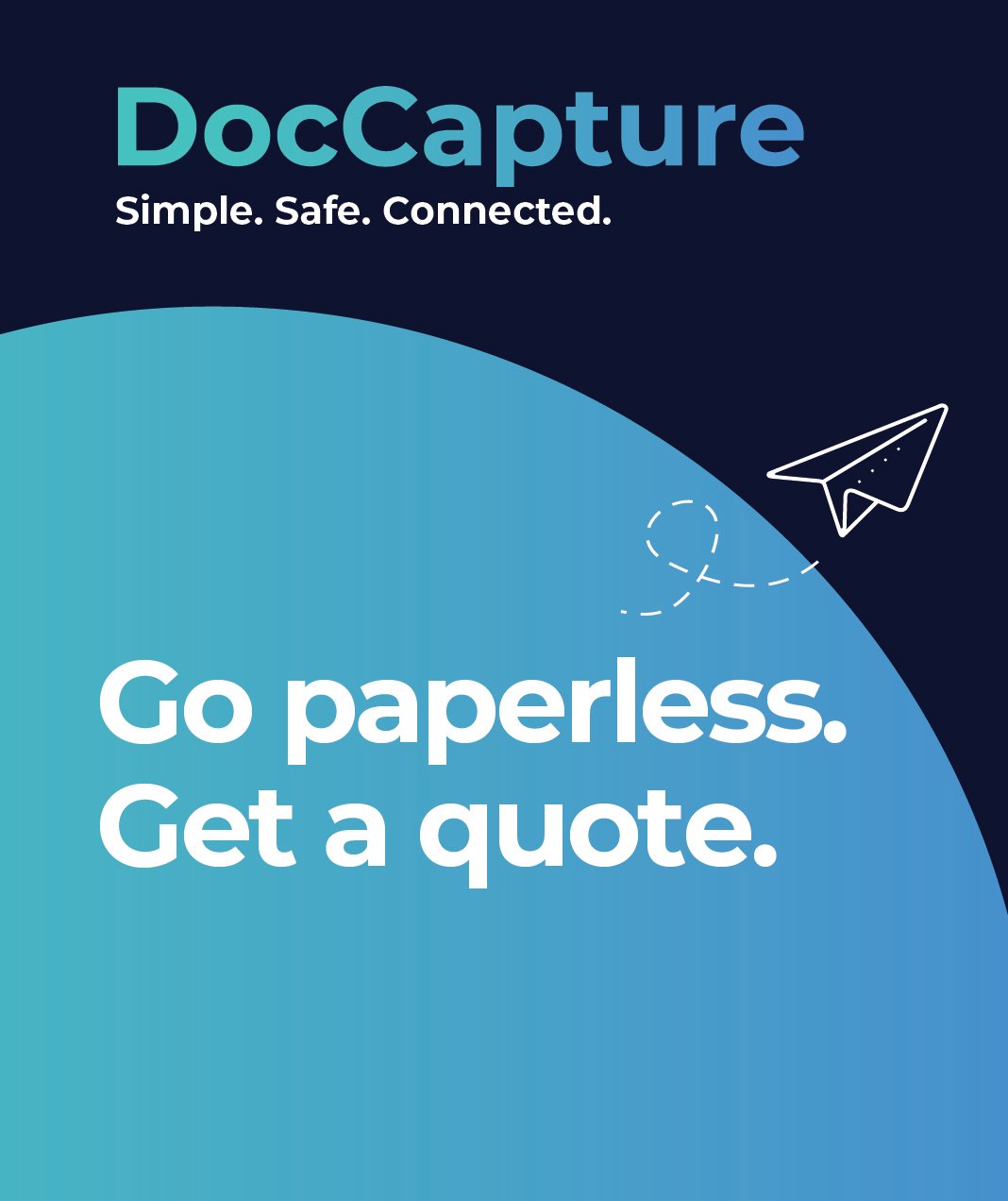Streamlining School Operations: The Case for Document Scanning
Table of contents
Across the educational landscape, school boards are under growing pressure to embrace digital transformation. With increasing demands for data security, streamlined operations, and regulatory compliance—especially under frameworks like FERPA—education leaders are reevaluating how they manage information. From student records to administrative documents, the traditional reliance on paper-based systems is no longer sustainable.
School boards, often managing records that span decades, face unique challenges: limited physical storage, cumbersome retrieval processes, and a high risk of data breaches or compliance violations. These pain points aren’t just operational headaches—they directly impact staff productivity, budget allocation, and the ability to serve students effectively.
This is where document scanning becomes more than a convenience—it’s a strategic necessity. By transitioning to digital records, educational institutions can unlock measurable improvements in efficiency, compliance, and cost-effectiveness. In this blog, we’ll explore real-world case studies that demonstrate the transformative impact of document scanning, and how DocCapture has helped districts of all sizes modernize their record-keeping processes.
Why Document Scanning Matters
For educational institutions, document scanning is more than a shift in format—it’s a powerful enabler of operational excellence. As school boards face growing data demands and tighter budgets, going digital offers a scalable solution that directly addresses today’s top administrative concerns.
Enhancing Efficiency
Manual document handling is time-consuming and error-prone. With document scanning, staff can locate files in seconds rather than hours, improving response times during audits, parent requests, or internal reviews. Digital archives also reduce reliance on physical storage, allowing school boards to repurpose valuable real estate for core educational activities.
According to internal projections, a mid-sized district could save over 500 staff hours annually simply by digitizing student records—time that can be redirected to strategic initiatives.
Ensuring Compliance
From FERPA to state-level retention policies, compliance is a complex but non-negotiable part of educational administration. Scanned documents can be automatically categorized, securely stored, and accessed by authorized personnel with audit trails. This ensures that school boards stay prepared for reviews and avoid costly penalties.
Learn more: Student Records Scanning
Managing Costs Effectively
Physical storage and manual labor come with a high price tag. Document scanning drastically cuts down on these costs by eliminating offsite storage fees and reducing the need for manual data entry. Over time, these savings compound—creating long-term budget flexibility for technology upgrades or academic programs.
Aligning with Broader Educational Trends
Digital transformation is no longer optional—it’s foundational. As more schools invest in cloud-based learning platforms and digital infrastructure, document scanning aligns seamlessly with these broader trends. It’s also a critical step in future-proofing operations, as discussed in Future-Proofing Education: Digitizing School Board Operations.
Explore more insights in our resource on Document Scanning for Schools.
Case Study #1: Small Local District
The Challenge
A small school district in the Midwest was drowning in decades of paper records. From enrollment forms to disciplinary actions, everything was stored in overfilled filing cabinets spread across multiple campuses. Staff struggled to find files quickly, compliance audits were a recurring source of stress, and storage costs were rising steadily. The district’s limited IT resources made it difficult to envision a viable path to modernization.
The Solution
After evaluating several providers, the district partnered with DocCapture for a full-scale student records scanning initiative. DocCapture’s team worked onsite to assess, categorize, and digitize the district’s most critical documents, prioritizing student files to ensure compliance with state and federal mandates.
The digital transition included:
-
Secure scanning of over 25,000 student files.
-
Implementation of searchable PDFs for fast retrieval.
-
Centralized access through a secure cloud-based document management system.
Explore how this approach aligns with best practices: Best Practices for Scanning Student Records
The Results
Within three months, the district saw tangible improvements:
-
Audit preparation time decreased by 70%, reducing administrative strain during state reviews.
-
Staff could retrieve any file in under 30 seconds—down from an average of 15 minutes.
-
The district reclaimed over 500 square feet of office space, converting it into a student services area.
-
Estimated annual savings on storage and labor exceeded $20,000.
By digitizing student records, the district not only improved compliance but also created a more efficient, responsive environment for students and families.
Discover more in our guide on The Need for K-12 Schools to Scan Student Records.
Case Study #2: Large Urban School Board
The Challenge
A major metropolitan school board serving over 150,000 students faced a digital dilemma: its legacy records management systems were fragmented across departments, with paper files stored in dozens of offsite facilities. The result? Inconsistent access, miscommunication between offices, and increasing concerns about data breaches and FERPA non-compliance.
Administrators knew they needed a more integrated solution but were wary of disrupting day-to-day operations during the transition.
The Solution
DocCapture stepped in with a customized, phased implementation plan. The solution focused on large-scale scanning of legacy documents—including administrative, HR, and student records—and a seamless integration with the district’s existing digital infrastructure.
Key components included:
-
Digitization of over 2 million pages across 10 departments.
-
Metadata tagging for quick searchability and categorization.
-
Integration with a secure, cloud-based repository accessible by approved personnel only.
To see how integration supports compliance, check out How School Boards Can Benefit from Document Imaging.
The Results
The impact was immediate and far-reaching:
-
Cross-departmental collaboration improved, as staff gained secure, centralized access to critical records.
-
The school board reduced document retrieval times by 85%, enhancing response times for internal audits and parent inquiries.
-
Cloud access enhanced business continuity and remote work capabilities.
-
Compliance protocols became more transparent, with full audit trails and access logs.
The transition not only supported FERPA compliance but also helped the board align with its broader digital transformation goals. Learn more in Digital Transformation for School Boards.
Key Takeaways
The case studies above illustrate a powerful truth: document scanning is not just about going paperless—it’s about unlocking greater efficiency, accountability, and adaptability in education.
Here are the core lessons that decision-makers can draw from these real-world successes:
Operational Efficiency Becomes Tangible
Both small and large institutions realized significant time savings and operational gains. Tasks that once took hours—like retrieving student records or preparing for audits—now take minutes or seconds. These gains not only free up staff time but also improve service delivery to students and families.
Compliance Is Simplified and Strengthened
FERPA compliance and other regulatory demands are more manageable with digital records. Secure access, audit trails, and standardized formats help school boards meet their obligations without scrambling during inspections or requests.
Dive deeper: Impact of Document Scanning on School Boards
Costs Are Reduced—and Predictable
From eliminating offsite storage to streamlining administrative workloads, document scanning creates long-term financial benefits. For districts operating under tight budgets, the ROI becomes hard to ignore.
Digital Transformation Isn’t Optional Anymore
Modern educational systems require digital infrastructure that supports remote access, data security, and cross-functional collaboration. Document scanning forms the foundation of this transformation, ensuring institutions remain agile and future-ready.
Explore this topic further: Going Paperless: The Future of School Board Document Management
Conclusion
As these case studies show, document scanning is a game-changer for educational institutions looking to modernize, comply, and operate more efficiently. Whether you're a small district buried in files or a large school board juggling legacy systems, the right scanning partner can make all the difference.
DocCapture brings expertise, scalability, and security to every project—helping school boards transform their operations without disrupting day-to-day workflows.
If you're ready to explore how document scanning can benefit your institution, fill out our Get a Quote form today. Let’s start building a smarter, paper-free future for your schools.
Share this
You May Also Like
These Related Stories

Mitigating Risks in School Administration Through Document Management

Digital Transformation in School Boards: A Strategic Approach

